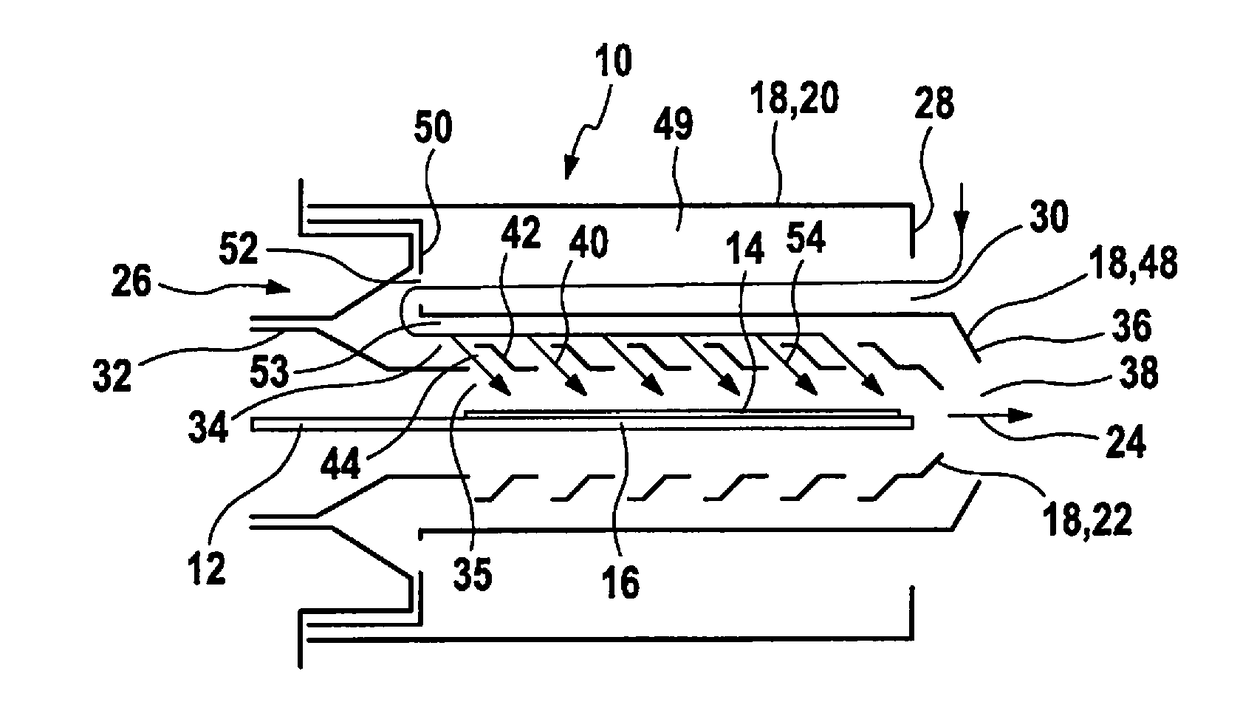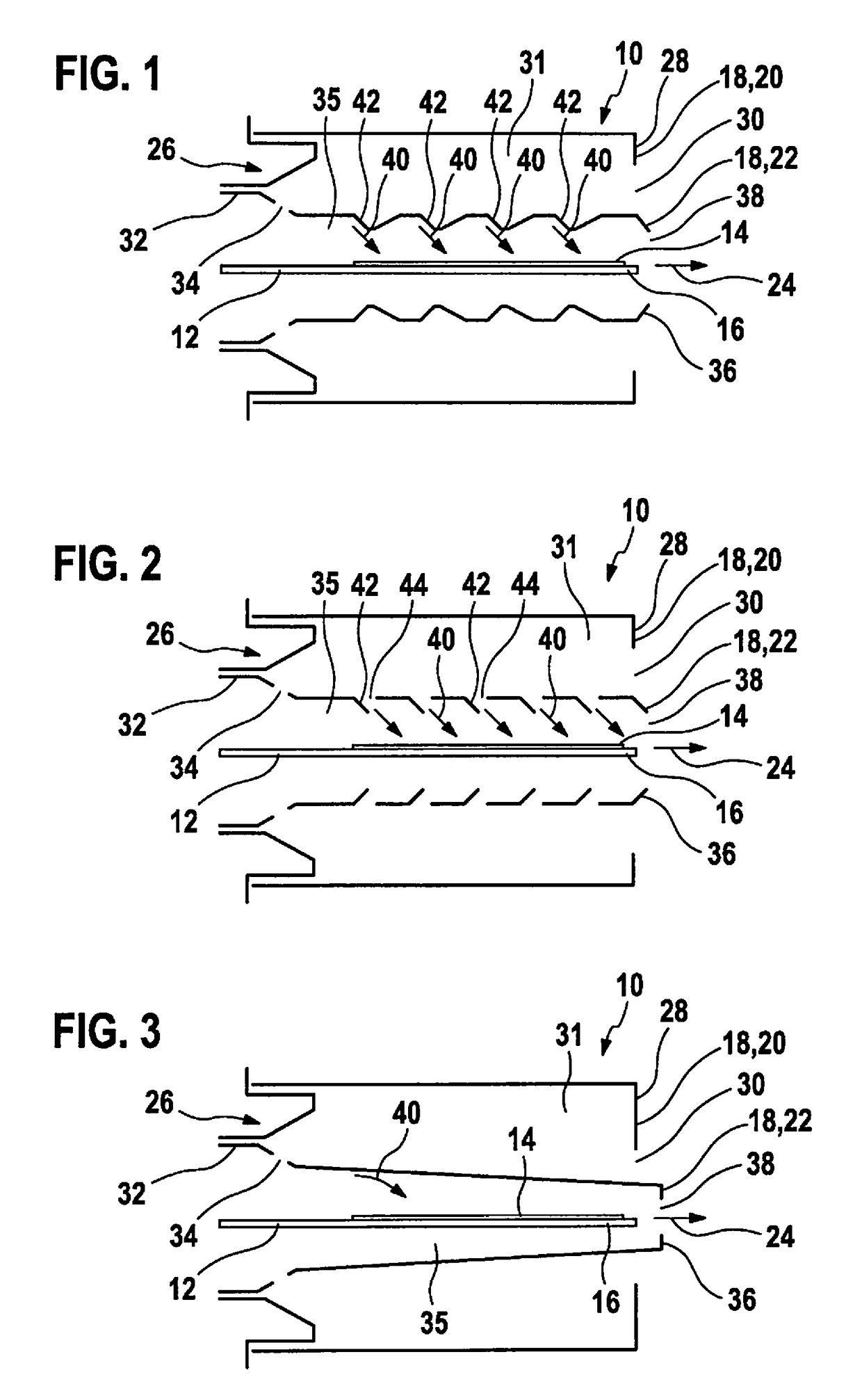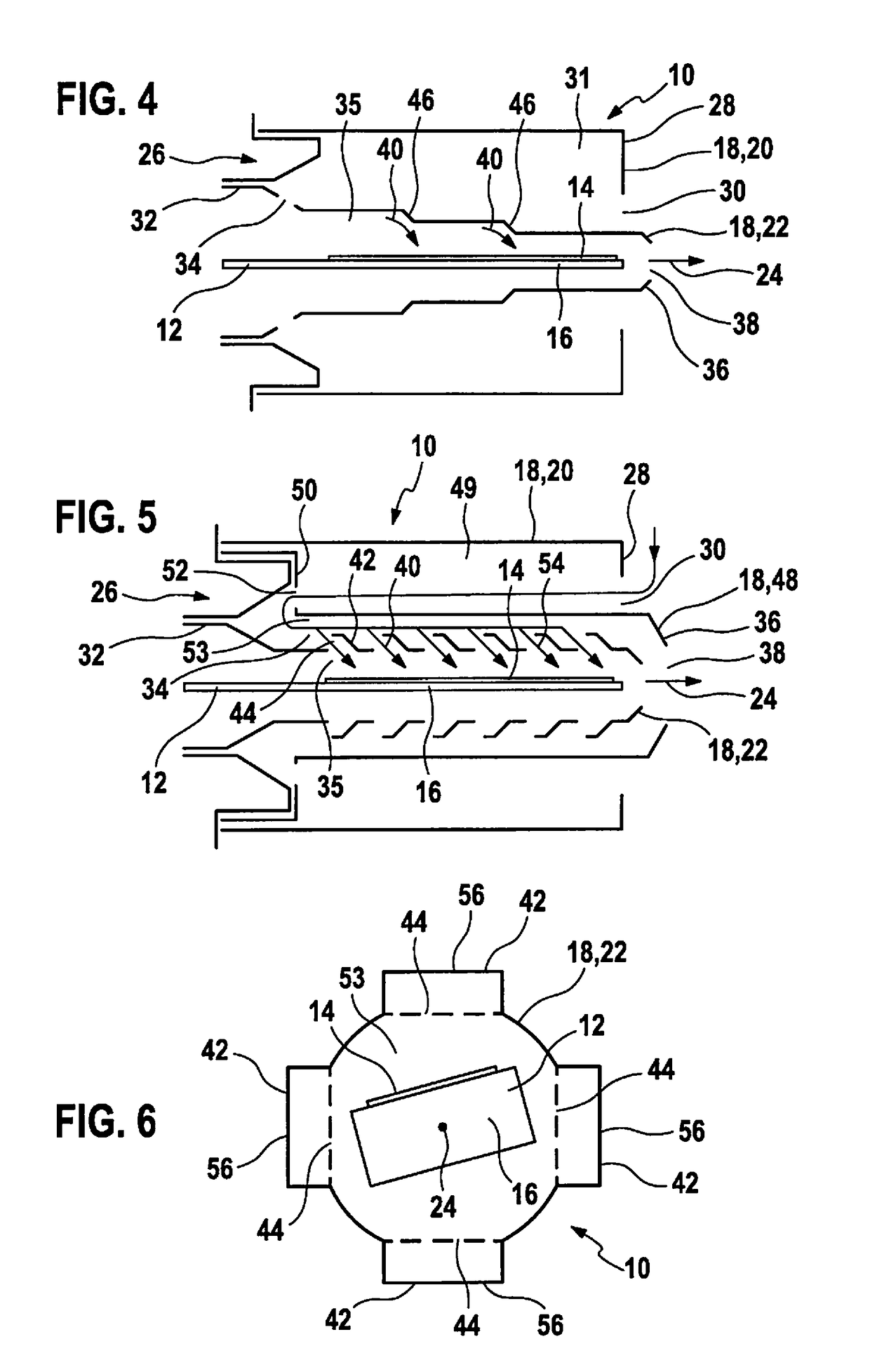Sensor for detecting particles
a particle detection and sensor technology, applied in the field of particles detection sensors, can solve the problems of not fully utilizing the electrode surface, the accumulation of soot particles no longer a function of the exhaust gas velocity, and the insufficient charge of the electrode system with particles
- Summary
- Abstract
- Description
- Claims
- Application Information
AI Technical Summary
Benefits of technology
Problems solved by technology
Method used
Image
Examples
Embodiment Construction
[0035]FIG. 1 shows a longitudinal sectional view of a sensor 10 for detecting particles, in particular, soot particles in a gas flow such as, for example, an exhaust gas flow of an internal combustion engine, which is suited for installation in an exhaust gas system of a motor vehicle. Sensor 10 is designed, for example, as a soot sensor and situated preferably downstream from a soot particle filter of a motor vehicle having a diesel combustion engine. Sensor 10 includes a sensor element 12 having at least two measuring electrodes 14, which are situated on a carrier substrate 16. Carrier substrate 16 may be manufactured from a ceramic material such as, for example, silicon oxide and / or aluminum oxide and / or zirconium oxide. The measuring electrodes 14 may be situated on carrier substrate 16, in particular, as interdigital electrodes.
[0036]Sensor 10 also includes a protective tube assembly 18 having at least one outer protective tube 20 and one inner protective tube 22. Sensor elemen...
PUM
| Property | Measurement | Unit |
|---|---|---|
| lengths | aaaaa | aaaaa |
| length | aaaaa | aaaaa |
| shape | aaaaa | aaaaa |
Abstract
Description
Claims
Application Information
 Login to View More
Login to View More - R&D
- Intellectual Property
- Life Sciences
- Materials
- Tech Scout
- Unparalleled Data Quality
- Higher Quality Content
- 60% Fewer Hallucinations
Browse by: Latest US Patents, China's latest patents, Technical Efficacy Thesaurus, Application Domain, Technology Topic, Popular Technical Reports.
© 2025 PatSnap. All rights reserved.Legal|Privacy policy|Modern Slavery Act Transparency Statement|Sitemap|About US| Contact US: help@patsnap.com



